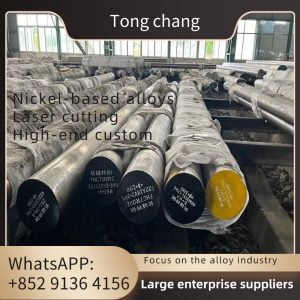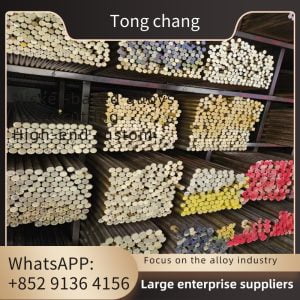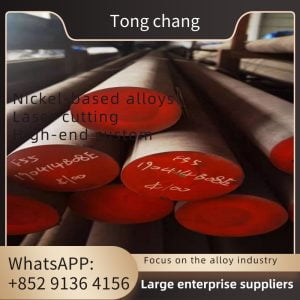| 碳钢管: | A179, A192, SA210 Gr A1/C, A106 Gr B, A333 Gr3 Gr6 Gr8, A334 Gr3 Gr6 Gr8, 09CrCuSb, DIN 17175 St35.8 St45.8, EN 10216 P195 P235 P265, GB/T3087 Gr10 Gr20, GB/T5310 20G 20MnG, A179, A192, SA210 Gr A1/C, A106 Gr B。 | O.D.: | 25-63MM |
|---|---|---|---|
| FPI: | 8-30MM | 鳍片高度: | <200MM |
| 鳍片厚度: | 1.5-3.5MM | ||
| 强光 | A192 方形翅片管, 方形翅片管经济器 | ||
用于经济器的 ASTM A192 碳钢焊接 HH 型方形 Finnrf 管
HH Finned Tube 节能器采用矩形翅片,类似于正方形,边缘长度是基管的两倍,从而增加了加热表面积。
矩形翅片焊接在两根钢基管上,形成 HH 或双 H 翅片管。HH 翅片管的焊接工艺采用闪光电阻焊,因此熔合率高,焊缝具有出色的抗拉强度和良好的导热性。
这种省煤器还可以生产双管 "双 H "翅片管,以结构坚固著称,适用于较长的管排应用。
| 材料 | 等级 |
| 碳钢管 | A179, A192, SA210 Gr A1/C, A106 Gr B, A333 Gr3 Gr6 Gr8, A334 Gr3 Gr6 Gr8, 09CrCuSb, DIN 17175 St35.8 St45.8, EN 10216 P195 P235 P265, GB/T3087 Gr10 Gr20, GB/T5310 20G 20MnG, A179, A192, SA210 Gr A1/C, A106 Gr B。 |
| 合金钢管 | A209 T1 T1a,A213 T2 T5 T9 T11 T12 T22 T91,A335 P2 P5 P9 P11 P12 P22 P91,EN 10216-2 13CrMo4-5 10CrMo9-10 15NiCuMoNb5-6-4 |
| 不锈钢管 | TP304/304L, TP316/TP316L TP310/310S TP347/TP347H |
| 铜管 | UNS12200/UNS14200/UNS70600,CuNi70/30,CuNi 90/10 |
| 钛管 | B338 Gr 2 |
| 类型 | 说明 | 底管 | 翅片规格(毫米) | ||
| 外径(毫米) | 翅片间距 | 鳍片高度 | 翅片厚度 | ||
| 嵌入式 | G 型鳍舌 | 16-63 | 2.1-5 | <17 | ~0.4 |
| 挤压 | 单一金属组合金属 | 8-51 | 1.6-10 | <17 | 0.2-0.4 |
| 低翅片管 t 型翅片管 | 10-38 | 0.6-2 | <1.6 | ~0.3 | |
| 竹筒波纹管 | 16-51 | 8-30 | <2.5 | / | |
| 伤口 | L/KL/LL 型鳍管 | 16-63 | 2.1-5 | <17 | ~0.4 |
| 字符串 | 弦翅管 | 25-38 | 2.1-3.5 | <20 | 0.2-0.5 |
| U 型 | U 型管 | 16-38 | / | / | / |
| 焊接 | 高频焊接翅片管 | 16-219 | 3-25 | 5-30 | 0.8-3 |
| H/HH 型翅片管 | 25-63 | 8-30 | <200 | 1.5-3.5 | |
| 带螺纹的鳍管 | 25-219 | 8-30 | 5-35 | φ5-20 | |
主要规格
- 最大工作温度工作温度300°C
- 耐大气腐蚀性:确定
- 机械阻力良好
- 鳍片材料选项:铜,铝,碳钢,不锈钢
- 基管材料选项:可提供多种材料,如碳钢管,A179,A192,A210,不锈钢管 A269/A213 T5 T11 T22 304 316
优势
使用翅片管的主要优势在于增强热流体通过管壁向冷流体的传热。与内表面积相比,外表面积的增加可以实现这一目的。翅片管可提高传热率,尤其是当管内流体的传热系数大大超过管外流体的传热系数时。
通过使用翅片管,可以提高整体传热率,减少特定应用所需的管子总数。从长远来看,这反过来又缩小了设备尺寸,降低了项目成本。在许多情况下,单根翅片管可以取代多根裸管,而成本和体积仅为裸管的一小部分。
翅片管尤其适用于热流体和冷流体通过管壁进行热传递的应用场合,例如空气热交换器。翅片增加的表面积有助于补偿管外侧较低的传热系数。翅片管式热交换器的流动模式通常是横流,但也可以是平行流或逆流。
总的来说,翅片对于增加热交换器管道的有效表面积至关重要,尤其是当管道外表面的传热系数大大低于内表面时。翅片管通常用于将热量从液体传递到气体、从蒸汽传递到气体(例如,从蒸汽到空气的热交换器)以及从热流体到空气的热交换器。
传热效率取决于流体之间的温差、传热系数以及流体的暴露表面积。








